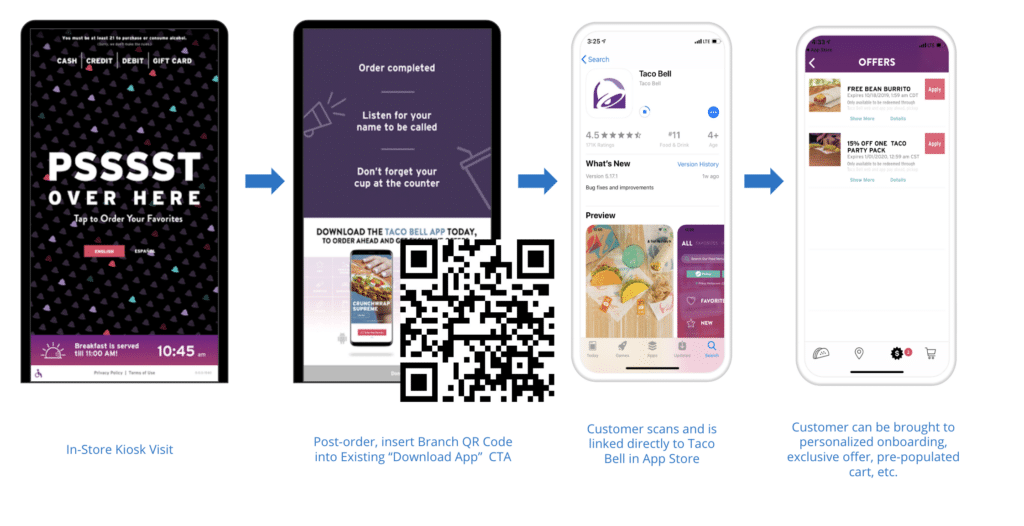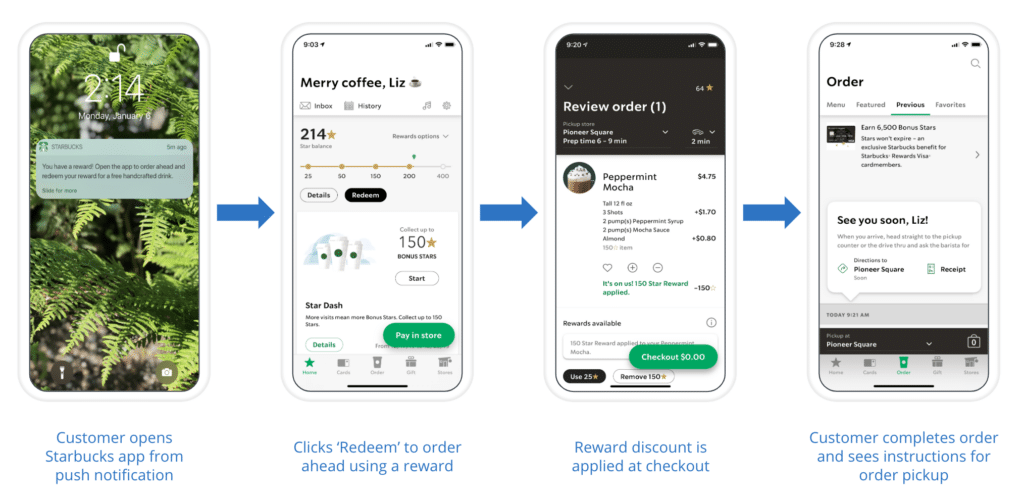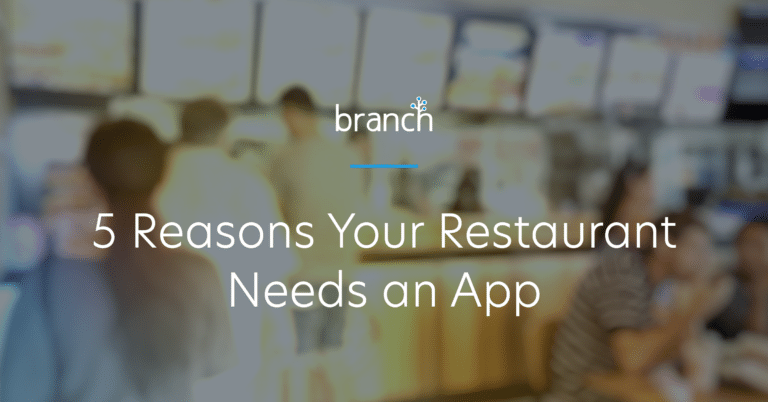90% of time on a smartphone is spent in apps, and 53% of smartphone users make purchases from company-specific apps. For Quick Service Restaurants, this presents an opportunity to drive revenue through mobile app transactions. You might think that your mobile website is enough, but that’s no longer the case. Apps are optimized to be user-friendly while even simple tasks on a mobile site, like filling out forms and choosing items, can be clunky and difficult. Users spend more money in apps, too: of mobile transactions, 66% occur within an app and 21% of people shopping in a mobile app actually buy a product, compared to just 3% for the mobile web.
Bottom line: if your mobile strategy isn’t a top priority for 2020, you’re leaving money on the table. And you can bet your competitors are already doing this. In fact, 60% of enterprises indicated organization-wide Digital Platform Strategies will be implemented in 2020. That said, let’s explore five reasons your QSR would benefit from an app.
5 Reasons to Invest in Your App
1. Improve Customer Experience
Your customers want a fast and easy dining experience. In fact, 81% of customers said they would use a restaurant more often if they could order in advance and then pick up their meal from a collection point at a pre-arranged time. Having an app for your restaurant facilitates the convenience of ordering from any place at any time on the go. Additionally, your app provides a centralized location for the customer dining journey, from choosing items to payment to pickup, which saves customers time and offers flexibility. With an app, customers can take their time building their order, easily customize, and are able to see restaurant info directly in the app, such as hours and nearest location.
Tip: Ensure your app onboarding experience is seamless to reduce churn — read our blog post, 5 Tips to Increase App User Engagement and Retention, to learn more.
2. Increase Visit Frequency
In a recent survey, 58% of QSR customers indicated they would visit a restaurant more often if experience-enhancing technologies were available.
A way to integrate experience-enhancing technology while also growing your app is through kiosk ordering. Ordering via an in-store kiosk not only allows users to easily tailor their orders — but you can also promote your app by showing a QR code to bring users to your app for even more personalized experiences and offers.

In this example, you can see how Taco Bell could incorporate a QR code into their existing kiosk experience to create a seamless kiosk-to-app experience. This not only provides a new avenue for app growth, but also an opportunity to connect user touchpoints to create a more personalized experience.
Advantages of kiosk-to-app experiences include:
- Attribute install to kiosk experience, store, etc.
- Attribute future orders to kiosk experience, store, etc.
- Seamless path to install
- Personalized onboarding
- Store & order data preserved for future experiences (i.e. pre-filled cart)
- Incentivize installs via exclusive offers that carry through into the app
3. Increase Customer Loyalty
An app also offers the opportunity for in-app rewards/loyalty programs that have huge potential to increase sales. According to research from Yotpo, 36% of consumers loyal to a brand are willing to spend more.
An example of a highly successful rewards program is the Starbucks Rewards program, where users are incentivized to pay with the app to earn stars they can eventually exchange for various rewards. Over the last two years, Starbucks Rewards membership has grown more than 25% and the app has become a part of peoples’ daily lives. In fact, roughly 40% of Starbucks’ sales in its U.S. stores come from the membership program.

In this example, a user redeems a reward in the app to place an order for pick-up at a nearby Starbucks location.
It’s important to note that loyalty programs are not defined by simply giving discounts to customers. While discounts play a role in loyalty programs, it’s more important that your loyalty program is highly engaging, personalized, synchronized across channels, and delivers good customer and user experience.
When running loyalty programs, make sure your in-app products are deep linked so users are taken to the correct content from reward push notifications or an online sign-up page. It’s also important to accurately attribute user data across platforms, channels, and devices, so you can offer personalized experiences. Which leads us to our next point:
4. Provide Personalized Experiences for Customers
Customers don’t want to feel like a number in your system, they want to feel valued and cared for. For you, this means creating personalized in-app experiences that are tailored to each customer. The benefits: decrease in churn and increase in sales. According to Accenture, 91% of consumers are more likely to shop with brands that provide relevant offers and recommendations.
A few ways to use (non PII) customer data to personalize customer experiences:
- Store customer preferences to upsell and cross-sell additional products based on their preferences and past orders
- Send promos and campaigns for their favorite items
- Send push notifications around the time they usually order
- Promote new items alongside their favorites (e.g. a discount on a new item when they add to their favorite order)
To make the most of personalized campaigns, make sure your push campaigns deep link into your app so users are taken to the right place to convert. The last thing you want is for your push campaigns to lead to your mobile site — or worse, an error page — where frustrated users will leave rather than order.
5. Improve Processes
In-app ordering and payment improves in-store efficiency. Orders placed in-app can be seen by store staff immediately, where they can prepare it for immediate carry-out — making order fulfillment easier. Additionally, shorter lines mean your in-store customers spend less time waiting and staff has more bandwidth to provide improved experiences to in-store customers — a win-win for customer satisfaction. Accuracy also improves as in-app ordering reduces the chance for human error when verifying correct order information, a delight for customers who like to customize their orders.
Investing in an app for your restaurant has the ability to dramatically increase your customer LTV (lifetime value) and create happier customers. To make these mobile experiences seamless and accurately attribute every conversion and every install — work with a partner like Branch. Contact our sales team to get started.






















